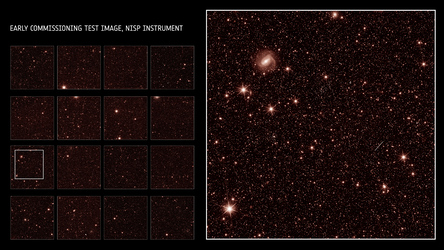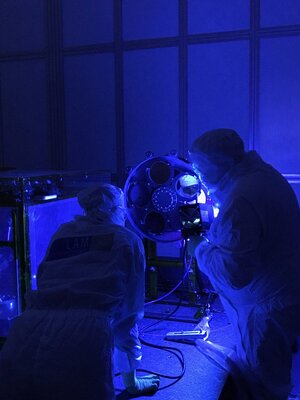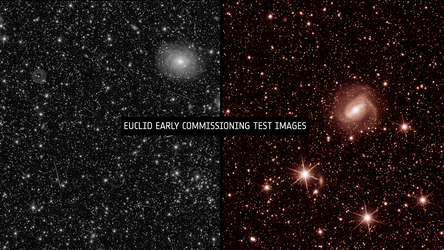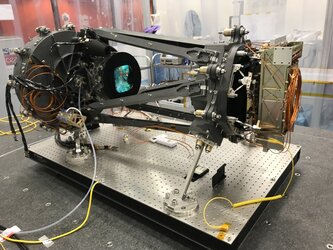

Early commissioning test image – NISP instrument (grism mode)
Euclid’s Near-Infrared Spectrometer and Photometer (NISP) instrument is dedicated to measuring the amount of light that galaxies emit at each wavelength. It will image the sky in infrared light (900–2000 nm) to measuring the brightness and intensity of light. This image was taken during commissioning of Euclid to check that the focused instrument worked as expected.
Before it reaches the detector, NISP sends incoming light through either a photometry filter or a spectrometry grism. In this image, the light from Euclid’s telescope has passed through the grism, which splits light from every star and galaxy by wavelength. This information can be pulled out and analysed to determine the type of galaxy and what its distance is.
Euclid’s telescope collected light for 100 seconds to enable NISP to create this image. During nominal operation, it is expected to collect light for roughly five times longer, unveiling many more distant galaxies.





